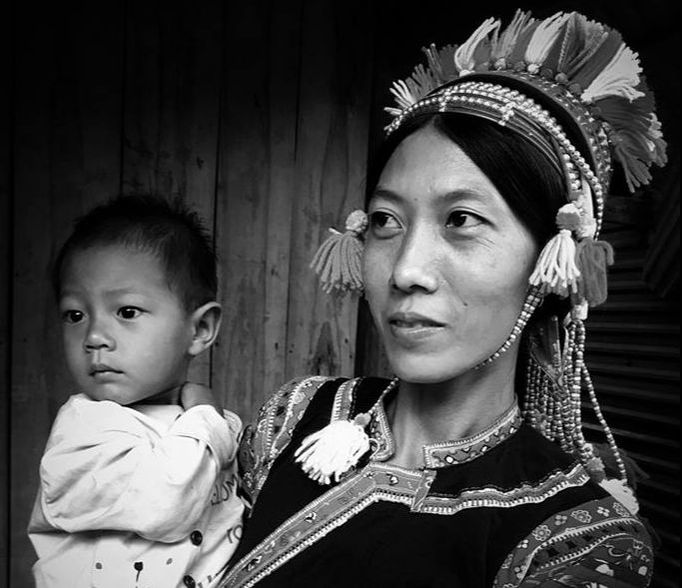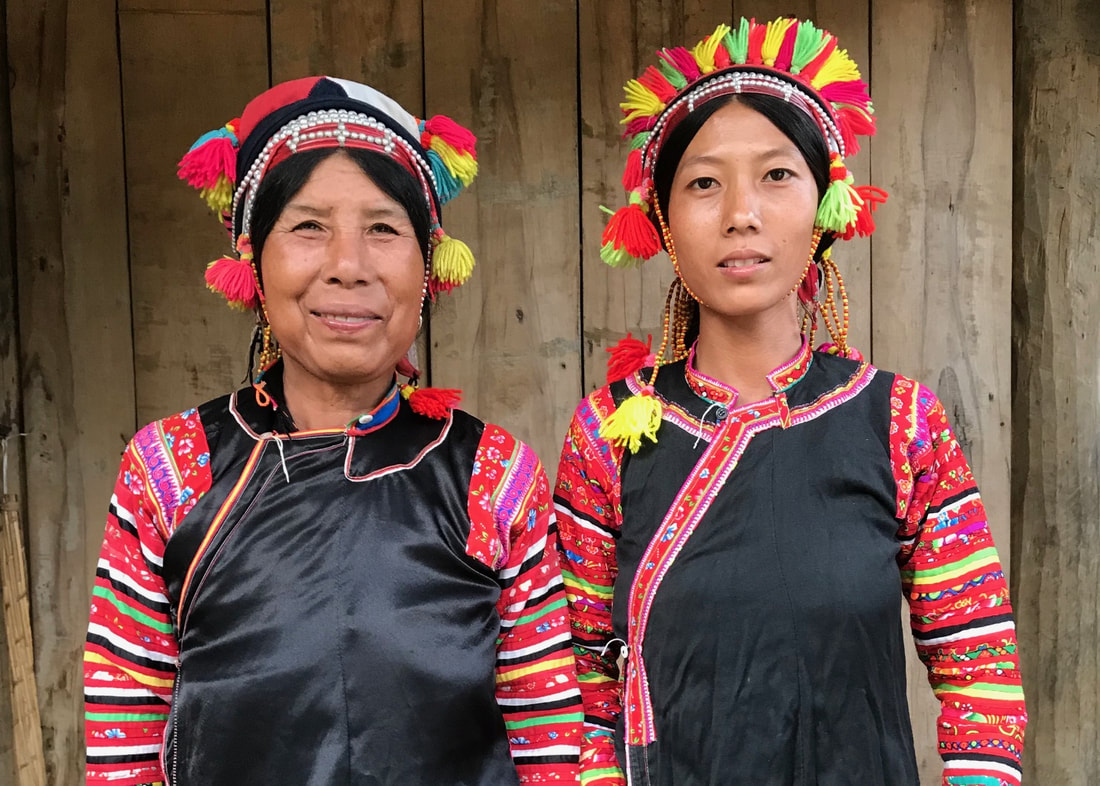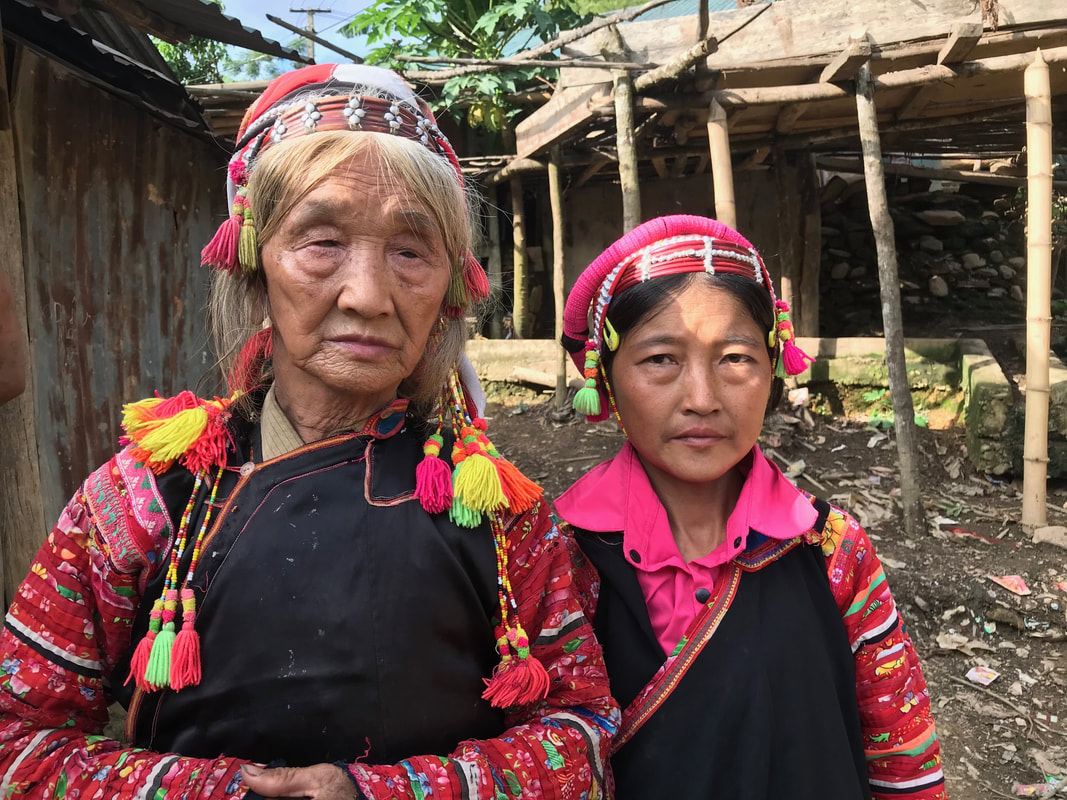La Hu
Numbering less than 10,000, the La Hủ have one of the smallest populations of the ethnic minority groups in Vietnam. Living a semi nomadic lifestyle until 1996, many La Hủ are still active hunters in the dense forests of the far North Western mountains.
Recently, their lives changed immeasurably with relocation due to hydro-electricity projects and the decision to convert to permanent settlements. The La Hủ now live in three villages in Muong Te District of Lai Chau. Most households now grow dry rice and corn.
The La Hủ wear their traditional costumes which consists of a black, long-sleeved jacket reaching down to the ankles. The middle and lower front part of the jacket is decorated with thin red bands, while the sleeves are banded red. Headdresses are very colourful and made of bright pompoms. The La Hủ also make very unique, intricately designed conical hats from bamboo.
La Hủ women usually do not weave. but sew, embroider and decorate their costumes from fabrics bought from the Lao or other ethnic groups in their vicinity. The La Hủ make colorful shoulder bags, either woven on a back-strap loom or sewn from pieces of cloth and then decorated with embroidery. These shoulder bags are carried by both sexes. The La Hủ have a good reputation as craftsmen and craftswomen, producing certain utensils made from bamboo and rattan. They weave sturdy back-baskets and storage-baskets of open or close weave, various kinds of traps for catching fish, birds and small animals and several musical instruments in many sizes. La Hủ men are also skilled blacksmiths, producing axes, knives and hoes.
Recently, their lives changed immeasurably with relocation due to hydro-electricity projects and the decision to convert to permanent settlements. The La Hủ now live in three villages in Muong Te District of Lai Chau. Most households now grow dry rice and corn.
The La Hủ wear their traditional costumes which consists of a black, long-sleeved jacket reaching down to the ankles. The middle and lower front part of the jacket is decorated with thin red bands, while the sleeves are banded red. Headdresses are very colourful and made of bright pompoms. The La Hủ also make very unique, intricately designed conical hats from bamboo.
La Hủ women usually do not weave. but sew, embroider and decorate their costumes from fabrics bought from the Lao or other ethnic groups in their vicinity. The La Hủ make colorful shoulder bags, either woven on a back-strap loom or sewn from pieces of cloth and then decorated with embroidery. These shoulder bags are carried by both sexes. The La Hủ have a good reputation as craftsmen and craftswomen, producing certain utensils made from bamboo and rattan. They weave sturdy back-baskets and storage-baskets of open or close weave, various kinds of traps for catching fish, birds and small animals and several musical instruments in many sizes. La Hủ men are also skilled blacksmiths, producing axes, knives and hoes.


